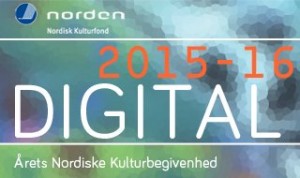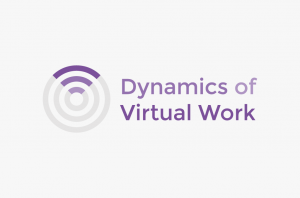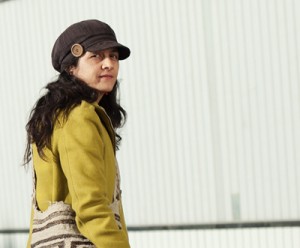Department of Media, Aalto School of Arts, Design and Architecture
COURSE DESCRIPTION
The Media Culture and Theory will give opportunity to students to develop theoretical frameworks to explore the fundamental domains relevant to the ongoing debates regarding media and the new media. Within the interdisciplinary characteristic of the field, the course will explore several related topics; Audience and community, Culture, Interpretation, Learning, Materiality, Memory and Physical Interaction. The seminar will deal with these topics through the areas of intersection between different dimensions of human agency and new technological/social practices in art and design context. We are interested in highlighting and discussing differences between modalities (sound vs. image); representation (video vs. graphics).
The course will begin with introducing the critical theory of Culture in media and later on will continue exploring how the new media’s practices have contributed to expanding the concept of Memory. The physical Interaction will focus on the physicality of the body, positioning the body at the center of interaction as the active component for creating meaning and aesthetics of the experience. At the same time, Materiality will be taking into account the use of Data in different domains, including applications to audiovisual practices. Recent developments and the use of enhanced technologies will be starting point for the discussions in Learning module. While social developments and the changing role of the audience will be introduced further in Audience and Community lectures, the identity and representation policy in media practices will be examined in detail during the Interpretation module. At end of the course, students will learn to carry out a broader perspective of these fields, by developing their own critical perspective to theory and practice that is grounded in both earlier conceptions of media as well as in new and critical notions of the new media.
MODULES
There are 6 modules that cover the following topics: Memory, Physical Interaction, Culture, Materiality & Data, Interpretation, Audience and Community. Each module consists of 3 sessions and includes the following:
1. A lecture on the selected theme by the responsible faculty person
2. A lecture by an invited presenter selected by the faculty person
3. A student-led discussion session.
SESSIONS
Beginning at 13:00 – 15:00, each session will last 2 hours and will be organized in the following manner:
1. In the first module session there is a lecture 45 minutes, with a break, followed by 45-minute discussion.
2. In the second session there will be an invited lecturer. There is a 45 minutes lecture, followed by discussion.
3. In the third and last session students make their own presentations about the topics that have been dealt with in the previous two sessions.
SESSION DATES
Throughout the academic year 2013-2014, the course will meet on the following dates:
Autumn 2013
October 3, 10, 17
November 3, 7, 14, 28
December 5, 12
Spring 2014
January 16, 23, 30
February 13, 20, 27
March 13, 20, 27
April 10, 17, 24
May 15
REQUIREMENTS
Students should strive to attend all module presentation. (80% attendance is the minimum in order to receive credits.) Each student must select a domain/module in which he or she focuses on and at the end must present and submit an essay. The essay should be a minimum of 3500 words.
CREDITS:
6-8 Credits.
LEARNING OUTCOMES
1. Students will survey important literature about media and new media theory.
2. They will acquire a basic foundation about media and new media theory that enables them to further develop their own critical thinking.
3. Additionally, participants will further develop their presentation and writing skills.
GRADING
– Attendance 3 credits
– Short presentations: 2 credits
– Essay: 1-3 credits
COORDINATION:
Media Lab, Graphic Design and Photography will work together to realize the course. Lily Díaz, Marja Seliger and Koray Tahiroglu are the responsible parties for coordination.
Module 1:
Date, time & place: October 3, 13:00-15:00, Room 344
Topic: About Memory, Prof. Lily Díaz
Among the difficult tasks for those interested in preserving a record of society’s heritage is that one of bridging the gap of time past and the present. Confronting the dark abyss as we enter into the mouth of the cave, peering to the other side, through the tiny crack in the wall, or opening the lid of the sarcophagus sealed, thousands of years ago. This is a gap that assumes many shapes and forms in our consciousness… And then there is the stark reality of our biological reality or as, as Henri Bergson aptly recognized, “Practically, we perceive only the past, the pure present being the invisible progress of the past gnawing into the future.” (Matter and Memory, p. 204.)
Recording what eventually becomes history itself, or the keeping of memory, is an activity that befalls the whole of the species, from bard and poet, to chronicler, to historian. And the plethora of examples throughout the ages which are vestige of such activity and which immediately surfaces is so vast that it could not be possibly named. In many cases the remnants are witness to interaction between culture and technology and the role that this has played in our subsistence.
Still, a point of inflection began to emerge at the turn of the 20th Century when digital media technology in the form of social media tools became a ubiquitous presence in our daily lives. In my presentation I will seek to survey and compare a variety of these artifacts and relate them to terms such as infrastructure. For this session of the seminar I would like us to ponder on the question of What role might these instruments play in the activities of the contemporary chronicler? How can new media theory assist us in understanding this new landscape?
Date, time & place: October 10, 13:00-15:00, Room 822
Topic: Memento a film by Christopher Nolan: “A man is determined to find justice after the loss of a loved one, even though he is incapable of fully remembering the crime, in this offbeat thriller.” Rotten Tomatoes, http://www.rottentomatoes.com/m/memento/. (Accessed Sept. 26, 2013.)
Group viewing and discussion. Reading: Joseph Levine’s, “Leonard’s System: Why doesn’t it Work? or John Sutton’s, “The Feel of the World: Exograms, Habits, and the Confusion of Types of Memory” in Kania, Andrew, Memento, London and New York: Routledge, Taylor Francis, 2009. This Philosophers on Film collection of essays can be found as an e-book online. You can find the link in Arsca database (http://arsca.linneanet.fi).
October 17, 13:00-15:00, Room 541
Student presentations.



